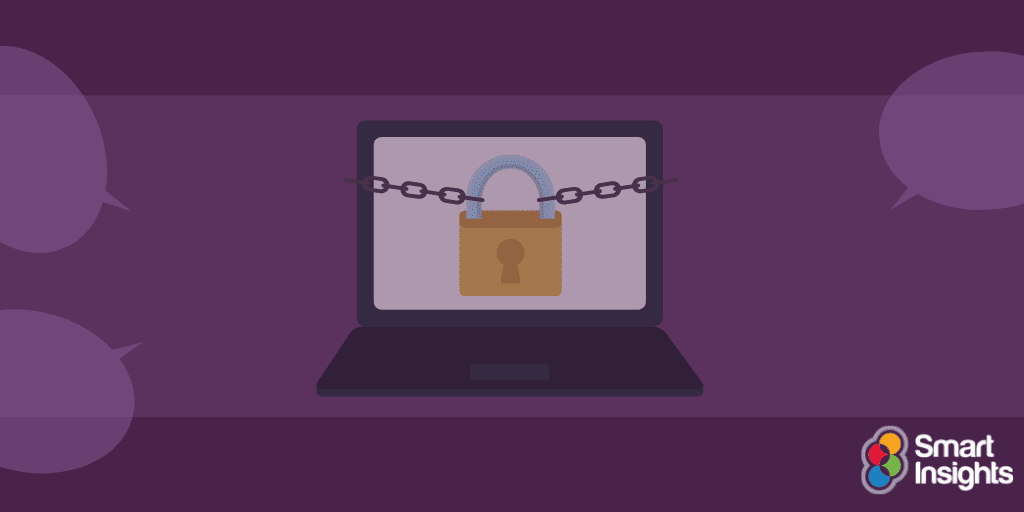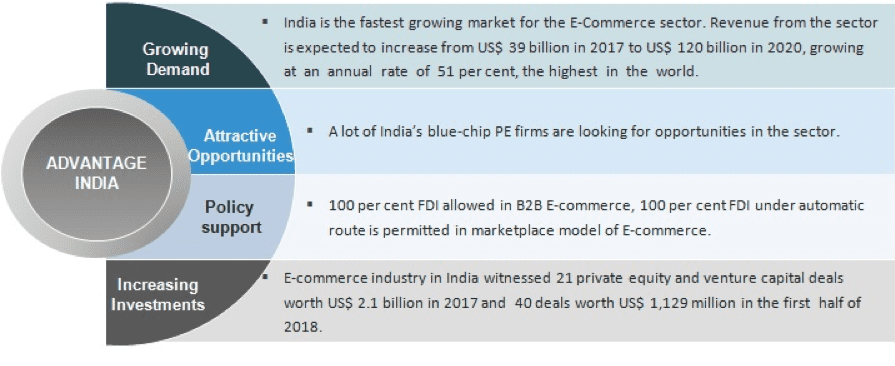Cyber attacks are becoming increasingly common, meaning that, if you’re not prepared, your e-commerce business could be at risk from more than competitors
The rate at which the e-commerce business is growing in India is remarkable. According to the Indian Brand Equity Foundation or IBEF, India is the fastest growing e-commerce market. IBEF mentions that this rapid growth in the market is due to the digitalization of every sector in the country.
As long as the business provides a service or a product which interests a wide range of customers, the online business is on the roll. While any e-commerce company has huge competition from other organizations in the same sector, they are not the only threats. Cyber attacks are becoming increasingly common, meaning that, if you’re not prepared, your e-commerce business could be at risk from more than competitors.
Statistical analysis of rising cyber crimes
As more and more businesses move into the online space, there has been a steady increase in the instances of cybercrime. According to the Times of India, there has been a 457% rise in cyber crimes reported in India in the last five years.
These statistics show just how much risk online companies are in, with possible attacks happening every hour. While e-commerce certainly offers a great number of benefits and opportunities to businesses, security issues are a major drawback.
An e-commerce business needs to be shielded well from all types of cyber threats. The first step to building a sustainable shield is getting acquainted with the types of threats you could be subjected to and their sources.
Types of Cyber threats & their sources/target area
Phishing
Phishing is one of the most common cyber threats present in the simplest form. The source of this cyber threat is mainly an email or message.
E-commerce often suffers an attack from a group or an individual who sends an email, which can be under the shroud of a customer or a trusted employee. This form of cyber attack basically spams the online portal for the business in order to ‘phish’ out important data either of the business or the clients of the business.
Credit card frauding
Credit card frauding is a growing threat to online businesses. Credit card frauding can be in the form of assumed identity, card theft, application fraud or expired validity card. There are several ways of card frauding that can hamper transactions in an e-commerce business.
DDOS
DDOS stands for Disturbed Denial of Service. An authentic cyber attack form, DDOS targets the bandwidth of the e-commerce business site. The attack is a multiple-source one at the traffic generation of the specific business portal. This disrupts the entire function of the business, severely damaging the traffic, as well as the existing database of the customers.
Malware
Malware is a software that is used for cyber attacks. This software allows an individual or a group to get private access to any system without the supervision of its authority. In e-commerce, malware is used to gain access to information relating to various customers, as well as confidential details about the business itself. Here are some of the common types of malware software used in cyber attacks.
- Ransomware
- Trojan Horses
- Adware
- Spyware
- Viruses
- Worms
Having a deeper knowledge about these threats helps in understanding how it affects the business.
Victims of cyber threats
International companies like eBay, Starbucks and Zappos have been victims of cyber threats, showing that even the largest businesses are at risk. There have been instances where hackers were able to hack into customer accounts for these sites, allowing them to access user details, such as names, phone numbers, addresses etc.
In some cases hackers where even able to access customer payment details, meaning they had access to bank account information or credit cards, putting the customer at risk and harming their trust in the company. In situations like this, it is not only the business that is at risk, its customers could be as well, leading to a range of issues.
How to fortify an e-commerce business form these cyber threats?
With an in-depth knowledge of the possible cyber threats your company may encounter, it is easier to understand the methods of prevention. Here are the best steps to set up a safe and secured e-commerce business:
Using a Secured Online platform for e-commerce
An e-commerce platform allows for the safe hosting of an online business, which keeps businesses safer from a range of different cyber attacks. All the data and private information can be kept safe from scammers on such a platform. This will reduce the threat of cyber attacks and allow you to protect yours and your customers’ data.
There are several e-commerce platforms available that provide guaranteed secure trafficking for online business. Choosing from the list of best platforms for e-commerce reduces the risk of being a target of cyber threats.

Using a protected internet connection
A safe and protected Internet connection is a must for hosting an e-commerce store. Any loophole in the connection can invite scammers and risk the security of confidential data. Ensuring your connection is fully secured will help make it harder for any would-be attackers to access your system.
Using a complex password
The simplest and most basic step to set up a protected e-commerce business is to have complex passwords set up for your platform and any accounts associated with your company. It is also important to ensure that each password you use is different and doesn’t follow the same sort of format to ensure they will not be easy to crack. This gives a protection to the business unit form the software-based cyber attacks. Here are a few tips on setting a complex password:
- The password must have an uppercase letter, a number and a character.
- Avoiding the use of birthdates, anniversaries or using names cam be easy to predict.
- A jumbled up combination of alphabets, numbers and characters makes for a good password.
- The length of the password should be longer than 8 to 10 characters.
An ideal password may look like something like [email protected]
In addition to secure passwords, you also need to make sure that all of your passwords are stored in a safe and protected way. After all, it makes no sense in having the most secure passwords possible if they are stored in an unsecured email account.
Using several levels of security system
This method is one of the most effective when it comes to protecting your e-commerce portal. Having a multi-level security system keeps the threat of cyber attacks low, as there are several layers a would-be hacker needs to get through.
The layers of security stall anyone trying to access the system illegally at several stages, identifying any potential threat way before the attack takes place. This means that there is a greater chance that the attack will be stopped before they are able to access any data. Multi-Level security makes sure that access to customer related information is under constant scrutiny.
Checking the authenticity of clients and employee
As most of the cyber attacks come in the form of spamming, it is important to first identify the spammers. Some spammers may make it seem as though they are potential clients or customers, or even an employee, in order to enable them to get access to secured data. Ensuring you check the authenticity of the clients and customers, as well as employees, can keep the threat of spams down.
Final thoughts
E-commerce is one of the best ways to expand and explore the different dynamics of a business. The revenue generated from the online portal is often much greater than offline alternatives generate.
However, the added advantage of online brings with it increased risk in the form of cyber threats. This means that investment in security is a must-have in order to protect your business and your customers.
With stricter cyber laws coming into enforcement and better security being available, cyber crimes could decline, but this is not a guarantee. Protecting your business from all threats is essential, as any sort of a scam can bring down your entire company and severely damage your brand reputation. It’s always safe to be behind the high barriers of the fort irrespective of the presence of the enemies on the other side.

